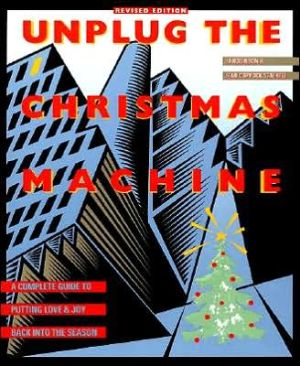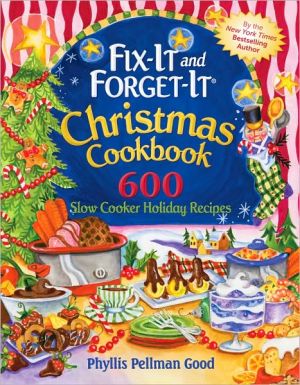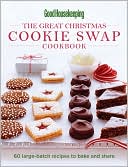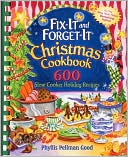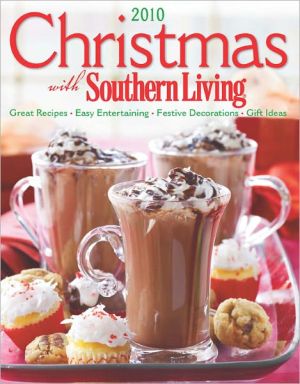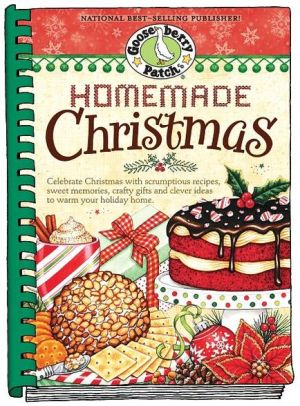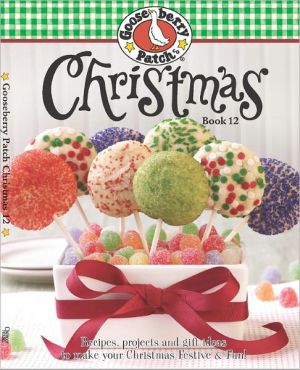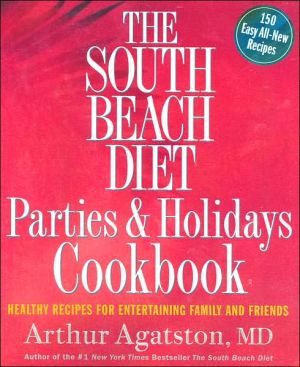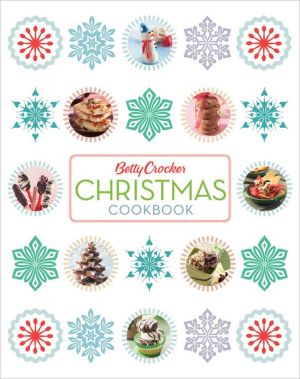Unplug the Christmas Machine: A Complete Guide to Putting Love and Warmth Back into the Season, Vol. 1
Nine years and thirteen printings later, Unplug the Christmas Machine is still the undisputed guide to creating a joyful, stress-free holiday season. Revised and filled with new material, this book will enjoy even greater popularity in the years to come.\ In the pages of Unplug the Christmas Machine, Jo Robinson and jean Coppock Staeheli answer the questions they have heard most often in their many years of talking with people about Christmas, such as: "How can I reduce the stress of...
Search in google:
Nine years and thirteen printings later, Unplug the Christmas Machine is still the undisputed guide to creating a joyful, stress-free holiday season. Revised and filled with new material, this book will enjoy even greater popularity in the years to come.In the pages of Unplug the Christmas Machine, Jo Robinson and jean Coppock Staeheli answer the questions they have heard most often in their many years of talking with people about Christmas, such as: "How can I reduce the stress of preparing for Christmas?" "How can I make our celebration more spiritual and less materialistic?" "How can I get my husband to be more enthusiastic about Christmas?" "How can I get my wife to relax and enjoy the celebration?" and "How can I help my children see that Christmas is more than just presents?" Readers will turn to this book for inspiration and practical advice year after year. Sixteen years after it first appeared, this perennial favorite is still the book that thousands turn to for sound, no-nonsense advice on how to combat Christmas commercialism and create a joyful, stress-free holiday season. The authors answer all the most commonly asked questions, from "How can I reduce the stress of preparing for Christmas?" to "How can I teach my children that Christmas means mote than just presents?" and many more.
Chapter One\ \ "A Christmas Carol"\ Revisited\ \ \ \ In the many years we've spent talking to people about Christmas, we've catalogued a lot of common problems people have during the holiday season. Many people feel pressured by all the work involved in orchestrating the family celebration. Many people are worried about holiday bills. Some people are worried about how to survive Christmas after a recent loss, such as a divorce, death in the family, or layoff from a job. And others are troubled by the fact that they are childless or single or estranged from their families and wonder how they can piece together a memorable celebration.\ But the one concern that unites virtually all the people we've talked to is a yearning for a simpler, less commercial, more soul-satisfying celebration. There is a universal wish to end the year with a festival of renewal that rekindles our faith, brings us closer to the people we care about, and brings light and laughter to the dark days of winter, We want to ward off the commercial excesses of the season and create an authentic, joyful celebration in tune with our unique needs and desires.\ But is this possible? We've noticed that many people come to our workshops with an air of resignation. Although they're unhappy about holiday commercialism--"Why do the ads have to start so early?" "Why is there so much pressure to buy, buy, buy?"--they don't have much faith in their ability to unplug the Christmas Machine. And although they freely admit to feeling hassled in those hectic weeks leading up to Christmas and then let down by the celebration itself, they aren't con, vinced they can make any significant changes.That's the way Christmas is for adults: stressful and ultimately disappointing. The most they dare hope for from us is a few tips on coping with holiday stress, and perhaps some answers to a few specific problems.\ By the end of a workshop, however, most people are filled with enthusiasm and have a newfound optimism about their ability to transform the celebration. They see that Christmas can be a rewarding, spiritual--even relaxing--time of year, and they are determined to make this happen. Part of this turnaround can be traced to the insights they have gained in completing the key workshop exercises. In the space of four hours, they've had a chance to pinpoint what they like and don't like about their current celebrations, clarify their values, get in touch with their fantasies, and create a simple plan to move toward a more satisfying celebration. (You will find all of these exercises in this book.)\ But people tell us that another part of the workshop that helps them a great deal is our ten-minute "mini-lecture" on the history of the Christmas Machine. When they have a better sense of the many subtle ways that commercialism has altered Christmas, they can see why the modem celebration seems so flat and uninspiring. And for the first time, they get a glimpse of some specific ways they can add more warmth and vitality to their own celebrations.\ To find out what the old-fashioned Christmas was really like, the two of us spent several days sequestered in the library. Like most people today, we grew up in a time when Christmas was heavily commercialized, so our vision of Christmas Past was a blurry pastiche of Currier and Ives prints and heart-tugging scenes from The Little House on the Prairie.\ We began to fill in some of the gaps in our knowledge when we cranked our way through reels of microfilm of December newspapers from the late 1800s. During this period of our country's history, we saw little evidence of the Christmas Machine. There were only a few holiday ads, most of them devoted to children's toys. The one or two ads targeted at adults displayed simple gifts called "holiday notions." If our grandparents and great-grandparents exchanged presents at all, they probably gave gifts on the order of pipe tobacco, books, a packet of pins, or hand-embroidered handkerchiefs.\ This simpler, less commercial Christmas is reflected in Christmas literature from the 1800s. Think for a moment about the heartwarming Christmas dinner in Bob Cratchit's house in Dickens's "Christmas Carol." Remember the warm welcome when daughter Martha walked in the door, glad to be home for the festive meal? Remember the young Cratchit children dancing around the table, unable to contain their enthusiasm over the aroma of the sage and onion stuffing? Remember Tiny Tim beating on the table with the handle of his knife in exultation over the Christmas goose?\ The only thing missing from this animated scene was any evidence of gifts. Although Tiny Tim may have found some trinkets in his stocking on Christmas morning, it is unlikely there would have been any gifts for the older children or for Bob and Mrs. Cratchit. In all but the wealthy families in Victorian England, gifts were reserved for the very young. The adults regarded Christmas as a time to feast, sing, and play riotous games. This is why Scrooge bah-humbugged his way through the holiday: There was little way for him to profit from the celebration.\ The fact that gift giving was of minor importance for adults in the nineteenth century had a profound effect on the celebration. First of all, holiday preparations could be less elaborate. A pioneer homemaker in Nebraska didn't have to spend weeks shopping for gifts, wrapping them, and then standing in long lines at the post office. Nor did she have the anxiety of wondering if she had chosen just the right gift for all the adults on her list. Instead, she could concentrate her energy on the baking and decorating and making a few gifts for the children.\ Unplug the Christmas Machine. Copyright © by Jo Robinson. Reprinted by permission of HarperCollins Publishers, Inc. All rights reserved. Available now wherever books are sold.
